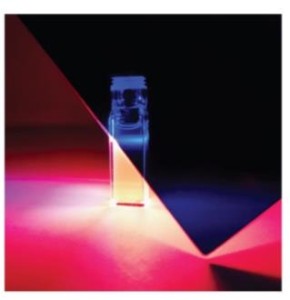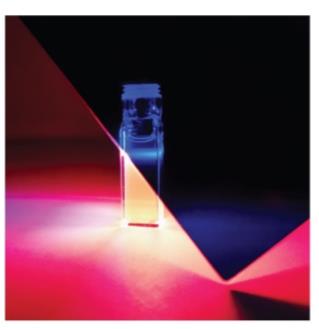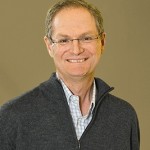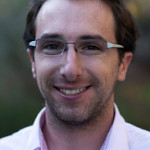“Science is a dynamic environment so keep in mind when you pick a problem to study that the world can change and you’d better be prepared to change with it.”
Speaking at the 2015 “fall” meeting of the American Chemical Society (ACS) in Boston, Berkeley Lab director Paul Alivisatos, an acclaimed pioneer in the quantum dot field, described what he called the “odyssey” of colloidal quantum dot light emitters, starting with their discovery to their applications first in biological labeling, then in display screens for electronic devices.
“Quantum dots produce the purest colors out there for displays,” he said, and to prove it passed around a Kindle Fire HDX 8.9 tablet so the audience could see for themselves.
Alivisatos, who is also the Samsung Distinguished Professor of Nanoscience and Nanotechnology at the University of California Berkeley, and director of the Kavli Energy Nanoscience Institute (Kavli ENSI), focused most of this ACS talk on the use of colloidal quantum dot light emitters in solar energy, a prospect that initially seemed bright, then dimmed considerably and now once again appears to be bright.
 “Colloidal quantum dots are robust and very stable light emitters and they can be broadly tuned simply through size variation,” he said. “We thought they would also be highly useful as light energy harvesters in solar cells, but economics changed that as the price of solar panels dropped precipitously.”
“Colloidal quantum dots are robust and very stable light emitters and they can be broadly tuned simply through size variation,” he said. “We thought they would also be highly useful as light energy harvesters in solar cells, but economics changed that as the price of solar panels dropped precipitously.”
Alivisatos acknowledged being discouraged but adapted his line of thinking to uncover a new and highly promising approach to applying colloidal quantum dots to solar energy – a next generation of luminescent solar concentrators (LSCs).
The idea behind an LSC is to absorb sunlight on a plate embedded with lumophores that re-emit the light at longer wavelengths – a process known as the Stokes shift – and direct this re-emitted light to a solar cell. Because the plate is much larger than the solar cell, the solar energy hitting the cell is highly concentrated – or at least in theory it should be. If the overlap between the absorption and emission of light is too high and the quantum yield too low, the concentration factor will be limited.
Alivisatos described a concept of “paying photon energy to reduce photon entropy” in which he and his collaborators replaced the molecular dyes that have been used as lumophores with specialized colloidal quantum dots. Used in combination with specialized photonic mirrors, these new LSCs increase the Stokes shift while reducing photon re-absorption. The results are a 30-fold luminescence concentration factor – the highest on record.
This achievement was described in detail in a subsequent ACS talk by Noah Bronstein, a member of Alivisatos’s research group and a key member of the LSC project. Working with colleagues at the University of Illinois, Bronstein, Alivisatos and other collaborators fashioned core/shell nanoparticles composed of cadmium selenide (CdSe) cores and cadmium sulfide (CdS) shells. These CdSe/CdS nanoparticles have a much more narrow emission spectrum than the dye molecules in conventional LSCs and were used with photonic mirrors that reduced the absorption spectrum of the light below bandgap by approximately 2,000 times.
“Our technique enables us to decouple absorption from emission energy and volume which in turn allows us to balance absorption and scattering to obtain the optimum nanoparticle,” Bronstein said.
Said Alivisatos, “A concentration factor of 30 still isn’t good enough for commercial applications, but it is much better than any previous factor and it should be possible with our technique to reach a concentration factor greater than 100.”
This work is being carried out through the U.S. Department of Energy’s Energy Frontier Research Center program and the National Science Foundation.
For more about the research of Paul Alivisatos and his group go here


